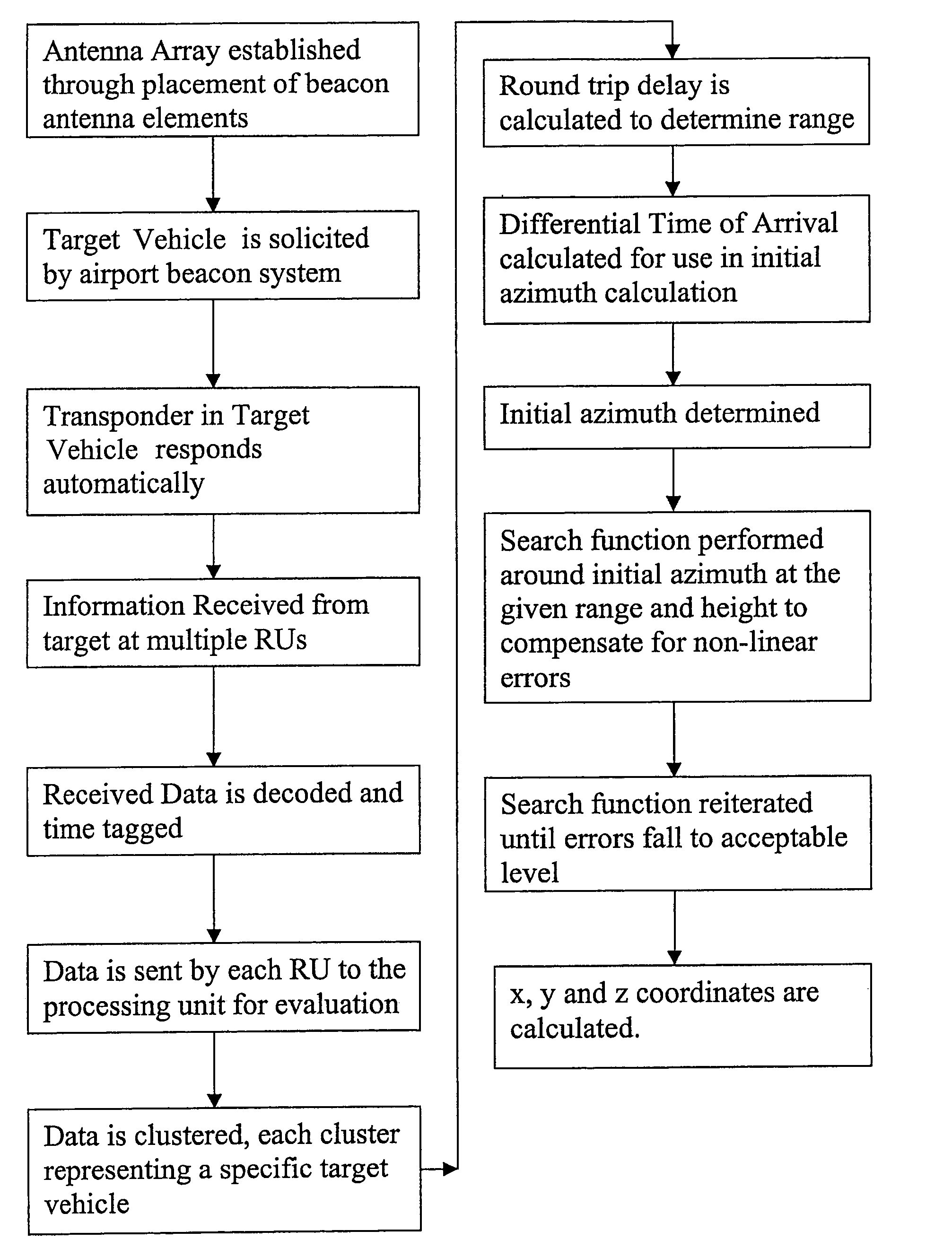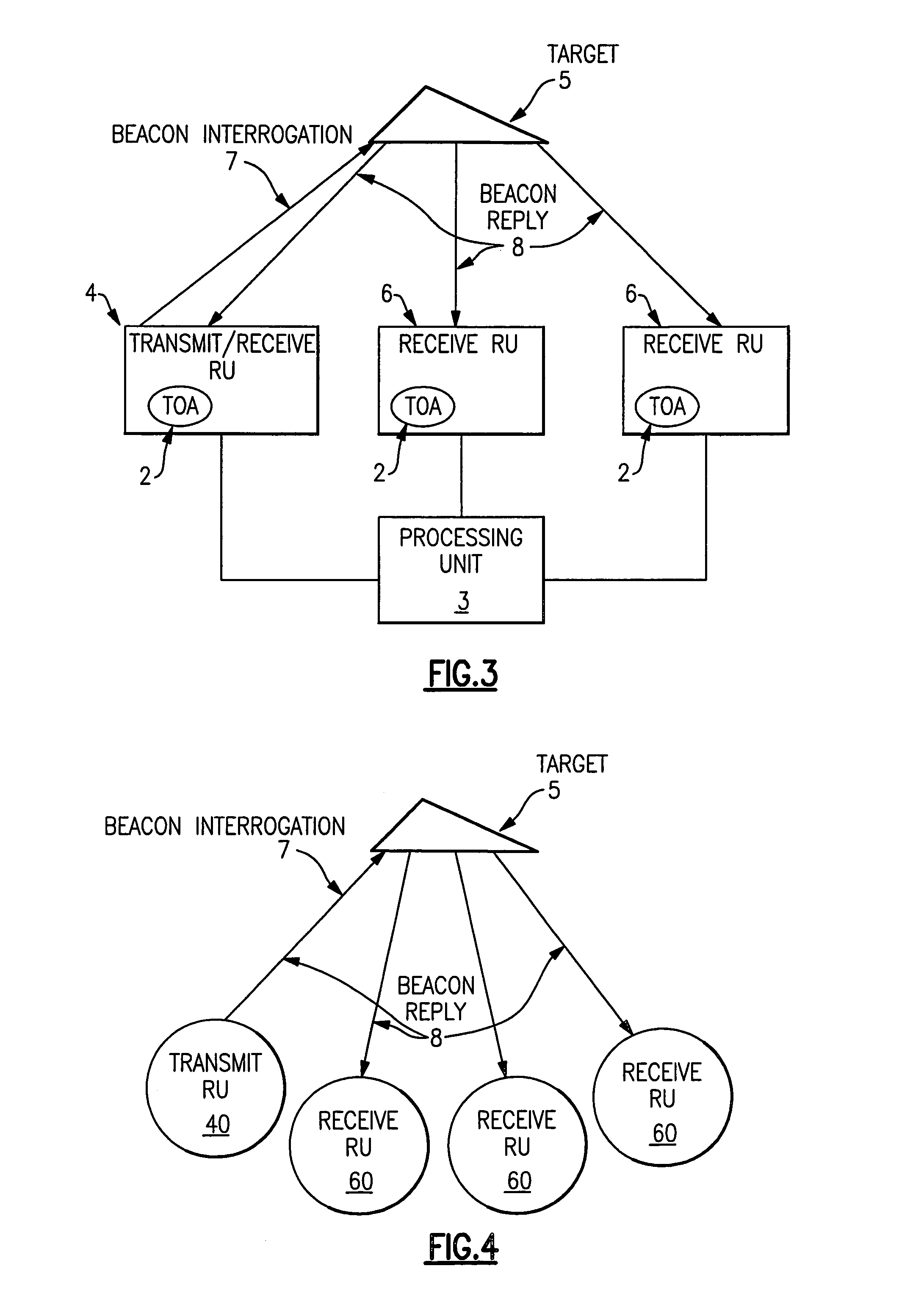Target localization using TDOA distributed antenna
a distributed antenna and target technology, applied in direction finders, instruments, measurement devices, etc., can solve the problems of difficult to locate targets, large geometric dilution of precision (gdop), and limited response speed of associated analysis equipment, so as to achieve high direction and location finding accuracy.
- Summary
- Abstract
- Description
- Claims
- Application Information
AI Technical Summary
Benefits of technology
Problems solved by technology
Method used
Image
Examples
Embodiment Construction
[0034]One embodiment of the present invention will now be described with reference to FIGS. 1–9. A number of antenna elements 1 (hereafter referred to as “receiving units” (RUs)) are placed in known positions within the airport confines to create an antenna array as depicted in FIG. 1. A typical RU is sold by Sensis Corporation (Model No. 100-008121-G001). The distance and placement of the RUs is referred to as the antenna array baseline or baseline. In this embodiment, any combination of at least one transmitter and three receivers is required to provide three-dimensional localization of targets in and around the airport. The RUs can receive only, transmit only, or both transmit and receive. More RUs may be required dependent upon the geography and building layout in and around the airport in order to overcome Line of Sight (LOS) obstructions and multipath issues. In accordance with the present invention, all of the RUs can be positioned within the confines of the airport, thus ins...
PUM
 Login to View More
Login to View More Abstract
Description
Claims
Application Information
 Login to View More
Login to View More - R&D
- Intellectual Property
- Life Sciences
- Materials
- Tech Scout
- Unparalleled Data Quality
- Higher Quality Content
- 60% Fewer Hallucinations
Browse by: Latest US Patents, China's latest patents, Technical Efficacy Thesaurus, Application Domain, Technology Topic, Popular Technical Reports.
© 2025 PatSnap. All rights reserved.Legal|Privacy policy|Modern Slavery Act Transparency Statement|Sitemap|About US| Contact US: help@patsnap.com



